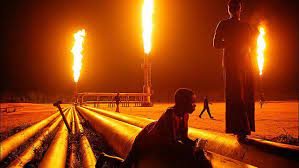Overview
Gas flaring has been a common practice in many oil-producing regions and this singular activity has contributed significantly to the pollution of the environment especially in the rural communities. The emissions from gas flaring do not only harm the environment but also pose a health risk to residents. However, several strategies can be employed to mitigate or control the pollution resulting from the gas flaring in rural areas. Through the implementation of these strategies, we can protect both the environment and the health of the people living in this community. some of these strategies are highlighted below;
1. Promoting Alternative Energy Sources
The adoption of alternative energy sources such as solar, wind, and hydroelectric power can help reduce the dependence on gas flaring for energy needs. Incentives, subsidies from government as well as community initiatives can support the installations of renewable energy streams in rural areas hence providing a sustainable and cleaner energy source while reducing pollution from gas flaring.
2. Community Education and Engagement
Educating members of rural communities about the environmental and health hazards of gas flaring is imperative for fostering awareness and promoting action. Engagement of community members in discussions about sustainable development and pollution mitigation strategies will empower them to advocate for change and participate in the decision-making process. Environmental monitoring programs which will be driven by the community can also help track pollution levels and hold companies accountable for their emissions.
3. Regulatory Measures and Enforcement:
Stringent regulations and enforcement mechanisms are necessary to gas flaring pollution effectively. governments should establish clear emission standards, monitoring requirements, and penalties for non-compliance to ensure that oil and gas companies operate responsibly. Regular inspections and audits of flaring sites can help identify violations and ensure that pollution control measures are implemented effectively.
4. Collaboration and Partnerships:
Effective collaboration between government agencies, industry stakeholders, non-governmental organizations, and local communities is essential for the development of comprehensive strategies to address gas flaring pollution. Partnerships can facilitate knowledge sharing, resource mobilization, and the implementation of integrated solutions that consider the social, economic, and environmental dimensions of the problem.
Conclusion:
Together, we can mitigate the adverse effects of gas flaring and create sustainable solutions that benefit both people and the environment.
Thank you 🙏 for reading through my post
